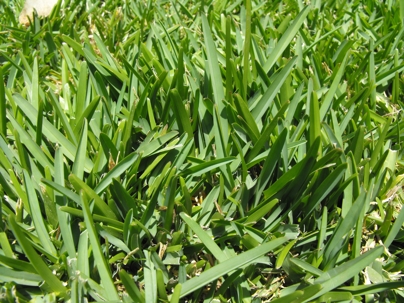What Happens During the Seasonal Transition
- Growth Slows, But It’s Not Dormant Yet
- Warm-season grasses (e.g., St. Augustine, Bermuda, Zoysia) gradually reduce growth as temperatures drop.
- Even though the grass isn’t growing as fast, the roots remain active, storing energy for the next growth cycle.
- Weed Pressure Can Increase
- Fall is an ideal time to apply a pre-emergent herbicide. This can prevent winter annual weeds (like henbit or annual bluegrass) from germinating.
- By reducing weed competition now, your turf has a better chance to come out of winter clean and strong.
- Nutrient Strategy Shifts
- Avoid high-nitrogen fertilizers as you approach winter; instead, opt for a formula with potassium to support root health.
- Milorganite agronomists also recommend reducing nitrogen and focusing on nutrients that build stress resilience.
- Adjust Your Mowing Practices
- Raise the mowing height by about ½ to 1 inch compared to your summer setting. This helps leaves capture more sunlight, which in turn helps the plant store food in its roots.
- As growth slows, mow less frequently—but don’t stop mowing altogether, especially early in the transition.
- Water Less, But Don’t Forget It
- Since growth is slowing, your lawn needs less water. Overwatering during this time can lead to fungal disease or root problems.
- However, you’ll still need to water occasionally during dry spells. Keep an eye on soil moisture and adjust accordingly.
- Prepare for the Off-Season
- Inspect and clean your mower—ensure blades are sharp, and get it ready for reduced use.
- Consider a soil test to understand your lawn’s nutrient needs. That info will guide your fertilization strategy during the rest period.
- Clear leaves and debris from the lawn so they don’t smother turf or create a damp, disease-friendly environment.
Why This Transition Period Matters
- Root Health: Proper care now sets up your turf for strong root reserves, making it more resilient in winter and ready to bounce back in spring.
- Disease Prevention: By controlling weeds and moisture now, you reduce the chances of fungal outbreaks when growth is slow.
- Long-Term Savings: A well-managed transition means less corrective work later. Fewer bare spots, fewer fertilizer burns, and healthier, more uniform growth in the spring.


